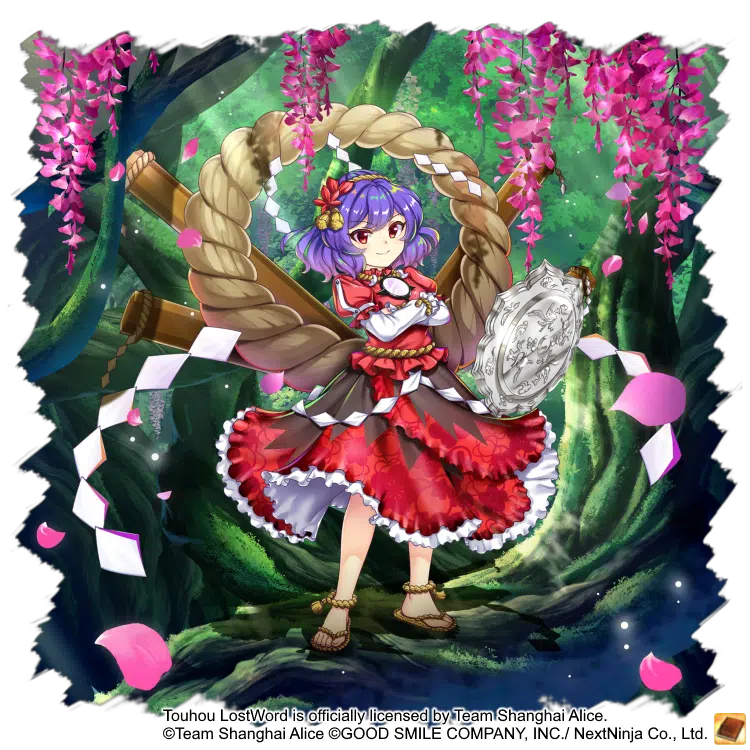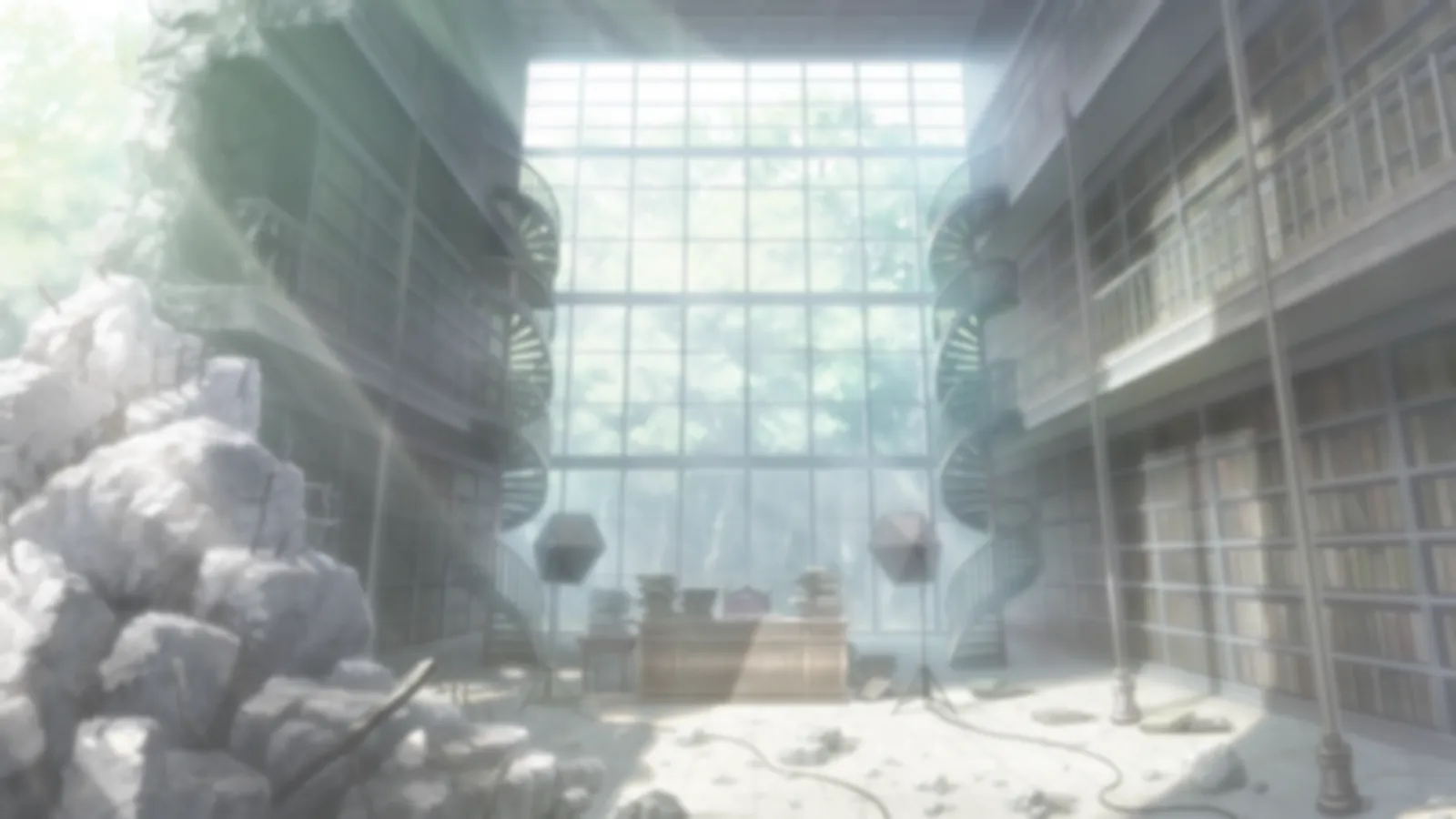Kanako Yasaka
Moriya's Official Tiny God
The usual outfit of Kanako from the world of iron and steam. The mirror on her chest looks bigger than usual due to her size.
Moriya's Official Tiny God

The usual outfit of Kanako from the world of iron and steam. The mirror on her chest looks bigger than usual due to her size.
Voice Lines
Voice Sets
Mountain God of the Tatara
VA: Kanno Mai
God Wants to Be Worshipped
VA: Hishikawa Hana
Young War God
VA: Orikasa Ai
Character Information
Temperament: Karakkaze
Ability/Backstory: Capable of creating heavenliness (Berserk)
Attacks
Great Sky Storm
The Spread Shot of Kanako Yasaka from the world of iron and steam (a Touhou LW original). She flies up into the sky and creates a big gust of wind. This attack pairs with Suwako's "Lake of Great Earth." Cultures all over the world see the visage of their gods in the sky. In part, this is because wind, being an invisible force, was thought to be a manifestation of their power. The gods express their will through the wind to bring blessed rain and sunlight or cause devastating storms.
Bullets
- Great Sky Storm
- Great Sky Fall Wind
- Great Sky Autumn Wind
- Great Sky Southeasterly Wind
- Great Sky North Wind
- Great Sky Typhoon
Wood Snake God
The Focus Shot of Kanako Yasaka from the world of iron and steam (a Touhou LW original). She swoops down from the sky, riding a log in the shape of a snake. This attack pairs with Suwako's "Stone Frog God." There are many Japanese legends and folk stories that feature trees and snakes (and sometimes dragons) together, so much so that there is even a word, "habaki," that means "snakes and trees" (or sometimes "dragons and trees" depending on how it is written). Nowadays, the Japanese word for "snake" is "hebi," but they used to be called "haba," like in Amenohabakiri (the sword wielded by the god Susanoo to slay the great dragon-serpent Orochi in Shinto mythology). It's also theorized that the enigmatic god, Arahabaki, was named after a great big tree that looks like a snake. Following this train of thought, it's possible that Hahakigi (a mysterious tree that looks like a broom standing on its end but disappears when you get close) and onbashira also have some kind of connection to snakes.
Bullets
- Habaki (Snake Wood) God
- Habaki (Dragon Wood) God
- Habaki (Wavy Wood) God
- Habaki (Leggings) God
- Habaki (Supreme Spit) God
- Habaki (Crossroads) God
Mystery: Yamato Torus
A Spell Card of Kanako Yasaka from the world of iron and steam. She deploys an ancient ring in this attack. There are two main types of ring-shaped objects used in Shintoism―chinowa, great rings of cogon grass that people pass through as part of a purification ritual, and shimenawa, thick ropes of rice straw or hemp. They both share the same religious significance. They are generally used to create boundaries or barriers with a clear inside and outside. However, they can also be used to erase boundaries because connecting the start and end of a rope together forms a ring that symbolizes eternity. In the far west, this idea is represented by the ouroboros, a symbol depicting a snake eating its own tail. Eternity is immortality, but it is also a near-inescapable prison. That is why shimenawa are used to tie up and restrain gods.
Bullets
- Yamato Torus
- Flat Yamato Torus
- Topological Yamato Torus
- Porous Yamato Torus
- 3D Yamato Torus
- Yamato Donut
Wind Sign: Sacred Land Storm
A Spell Card of Kanako Yasaka from the world of iron and steam. She kicks up a storm from the land of the gods. The concept of "ten" or "tian" in Chinese (generally translated as Heaven) is often thought of as synonymous with the sky, but there are some key differences between them. "Ten" refers to the celestial canopy, a dome around the earth that acts as the boundary of the universe. Celestial objects, such as the Sun, the Moon, and stars, follow fixed paths along this dome. On the other hand, the sky refers to the visibly empty space between Heaven and Earth. While it appears empty, it is, in fact, full of an invisible magic power (pure wind) that swirls around and propels celestial objects. Thus, controlling this wind is a form of celestial wizardry.
Bullets
- Sacred Land Storm
- Sacred Land Fall Wind
- Sacred Land Autumn Wind
- Sacred Land Southeasterly Wind
- Sacred Land North Wind
- Sacred Land Typhoon
Kanna Nagashi and Wisteria Sieves
The Last Word of Kanako Yasaka from the world of iron and steam (a Touhou LW original). She teaches an ancient art of ironmaking, where iron is extracted from ore through gravity separation. The wind brings rain, rain forms rivers, and rivers erode mountains, washing away the earth. The earth contains ore, and ore combined with fire produces metal. Metal is a gift from the gods realized through the Five Phases, starting with wind. It has long been known that wind is needed to light a fire and to make it hotter, but nowadays, wind is also known as a type of renewable energy. Metal (especially iron) and energy are the foundations of human civilization, but they are also the core foundations of this planet. This planet is essentially a colossal ironworks.
Bullets
- Wisteria Sieve
- Ore Pit
- Wisteria Wicker
- Iron Sand Waterways
- Wisteria Basket
- Flowing Water and Added Water
Skills
Skill: Vernal Equinox Flow
Waterways are used to carry and process iron ore during winter and spring. This work is especially busy when the water level rises during the vernal equinox.
Skill: Fertile Rice Fields
The soil washed down from the mountains is used for rice fields. This is truly a blessing from a god of harvests.
Skill: Lucky Tatara Bellows
In Japanese, "to blow" and "prosperity" are homophones. They are both pronounced "fuku." Mountain gods provide prosperity for the people.


